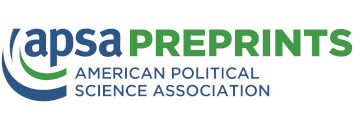Abstract
Prior to the COVID-19 pandemic, some American states had transitioned to universal voting-by-mail, where all registered voters receive a mail ballot. But due to the pandemic, universal voting-by-mail was suddenly used in a larger number of states in 2020. Here we study a unique situation in which registered voters in some legislative districts in Los Angeles County were subjected to universal voting-by-mail in the March 2020 primary. Using difference-in-differences and geographic boundary-based designs on individual-level records, we take advantage of this within-jurisdiction situation to estimate the causal effects of universal voting-by-mail on voter turnout and on who votes. Our results indicate that voter turnout increased by 3 to 4 percentage points for voters who do not automatically receive a mail ballot, and the increase is generally larger for registered partisan voters than those without a party affiliation.


![Author ORCID: We display the ORCID iD icon alongside authors names on our website to acknowledge that the ORCiD has been authenticated when entered by the user. To view the users ORCiD record click the icon. [opens in a new tab]](https://preprints.apsanet.org/engage/assets/public/apsa/logo/orcid.png)




